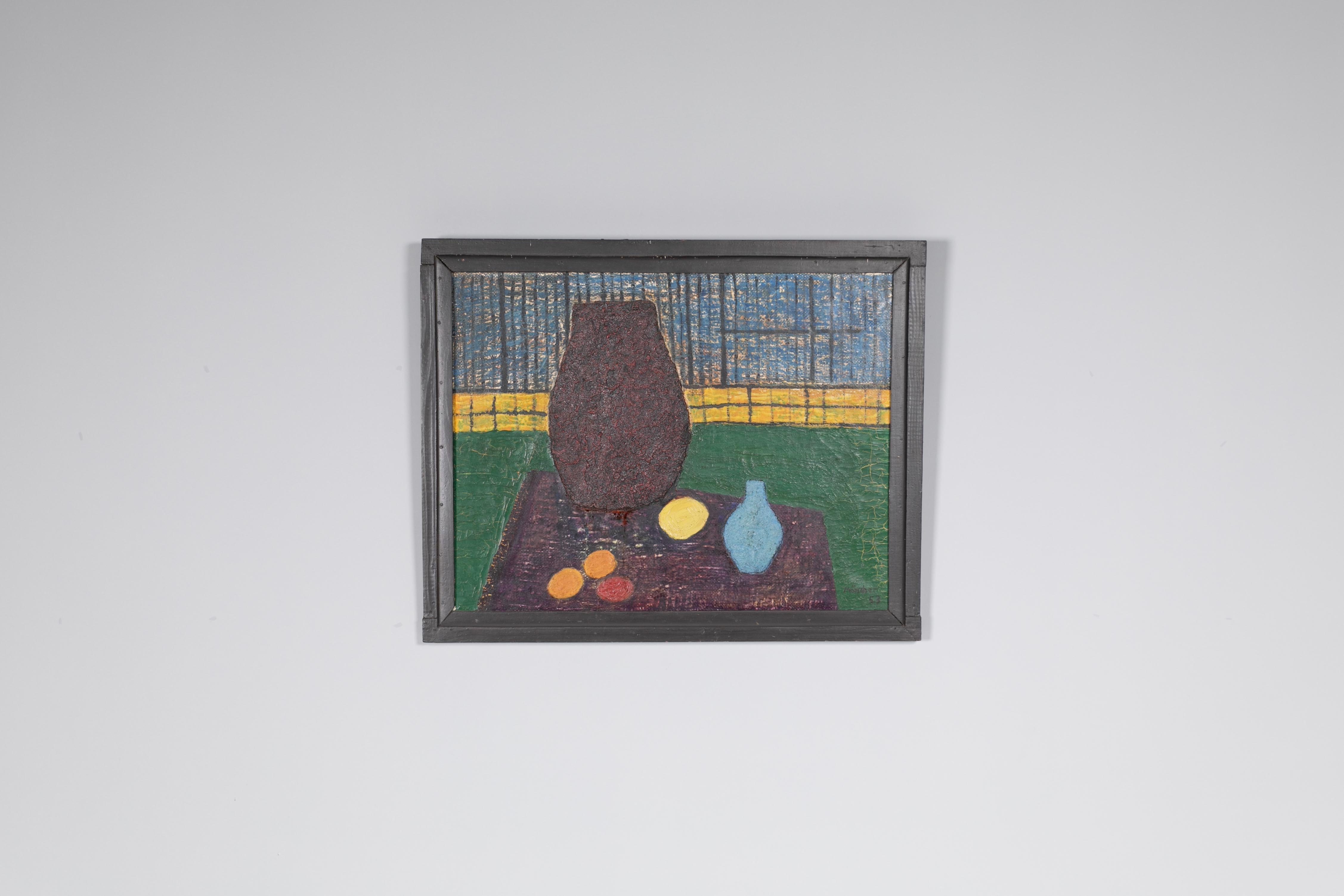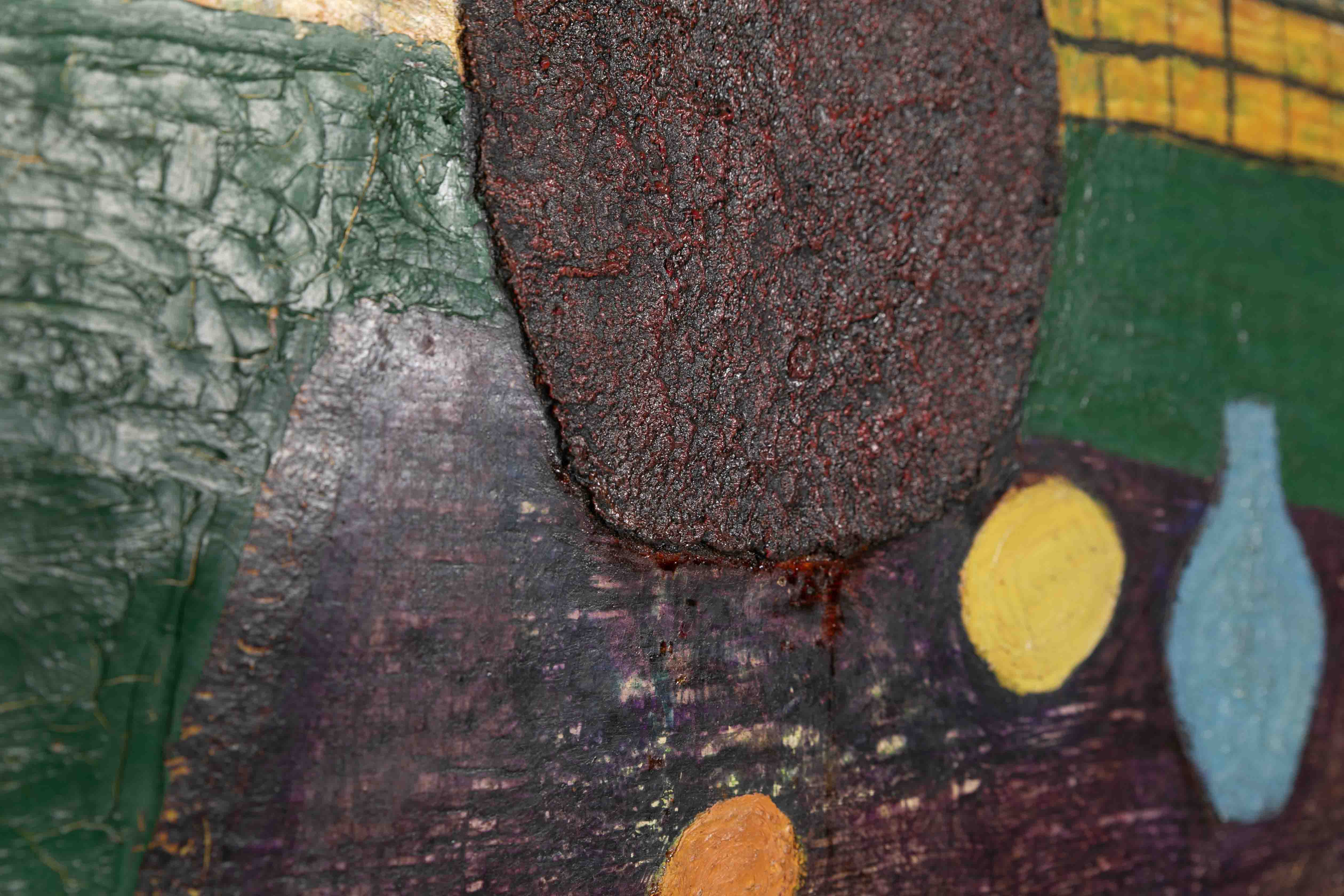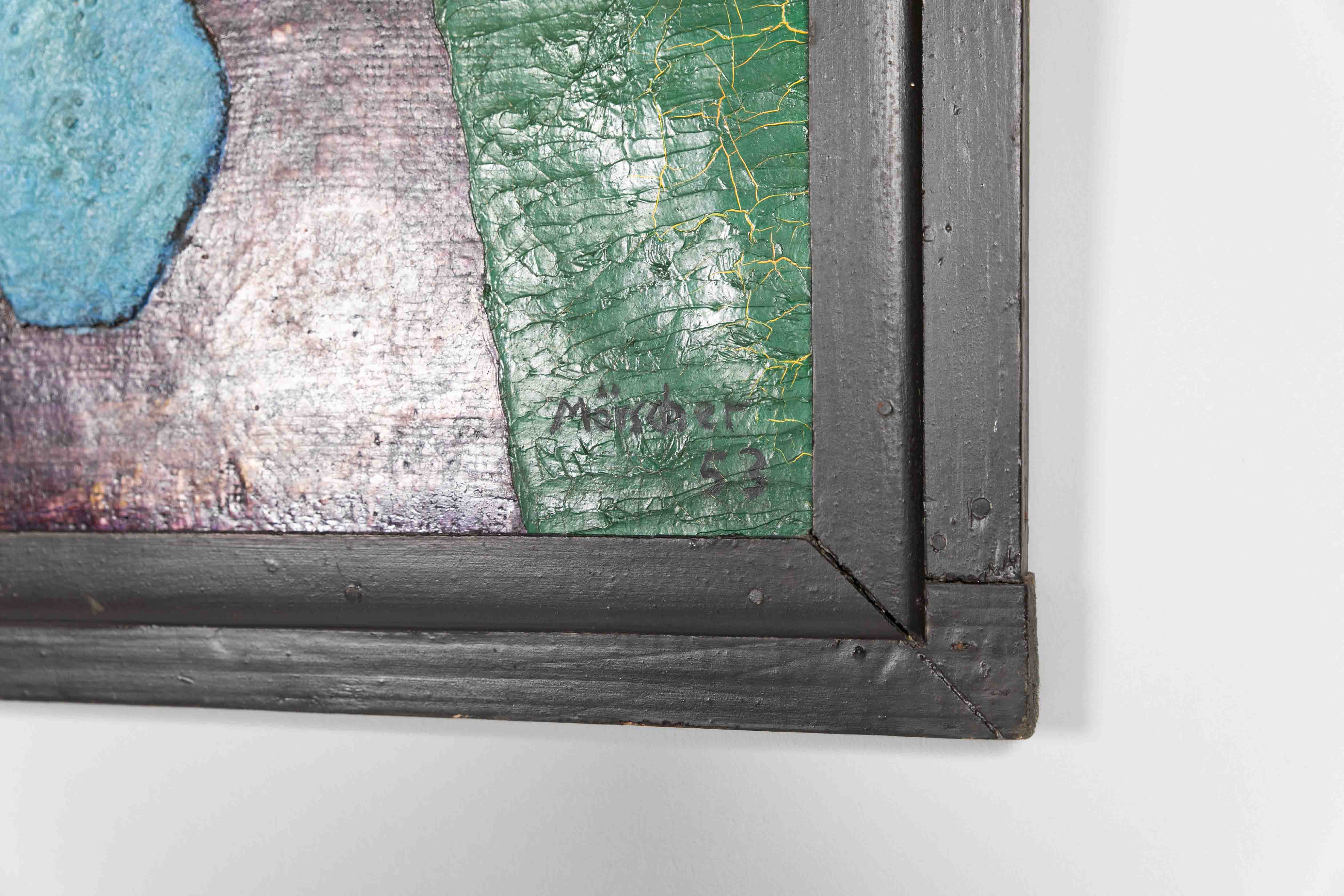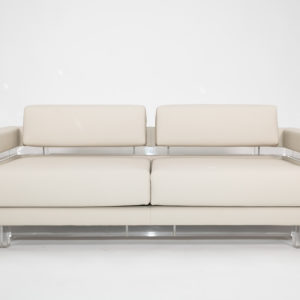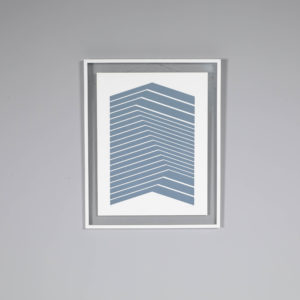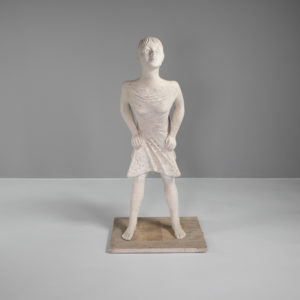Franz Mörscher, still life 1953, oil on canvas
800,00€
Franz Mörscher
The composition of the painting is deliberately designed for reduction and corresponds to the idea of cultural minimalism and the new objectivity that developed in the 20th century. Mörscher chooses the rational, crystalline form of the representation of selected objects (vases, lemon, fruits?) and uses color as surface and line to create structure in the space.
In this composition, Mörscher reduces the classical means of perspective to create a pictorial space between object light and color.
The application of paint appears partially modeled. The natural crack and fissure network (Krakelee) of the sometimes layered paint application seems to be deliberately achieved.
The selection of the depicted objects is possibly also based on symbolic aspects. After the desolation of the war years, the painting speaks of the color world of the spirit of optimism of the 1950s.
W 63 x H 50
W 71 x H 58
Biography
Franz Mörscher was born on November 7, 1931 in Bundenbach and died on July 14, 2018 in Neunkirchen (Saar). Besides the sculptor Hubert Nietsch, he was the second artist to set a monument to the miner’s cow in public space in Germany from 1993 to 1995. Franz Mörscher studied from 1951 at the School of Arts and Crafts Saarbrücken with Boris Kleint among others in the subjects of painting and sculpture. During his studies he met the photographer Otto Steinert, under whose influence he also turned to photography. Scholarships for study visits took him to Paris, Salzburg and Milan. Since 1956 Franz Mörscher worked as a freelance artist in various fields, both as a sculptor, mosaic artist, painter, photographer and book author. In the years 1963-1969 he created a series of oil paintings on canvas under the title “Search of the human image from the inside to the outside” which also received national attention.


